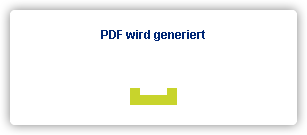MOF publishes updated guidance on R&D tax incentive
Updated guidance replaces 2021 guidance and incorporates practical experience with the incentive that was introduced starting from 2020.
The German Ministry of Finance on 7 February 2023 published updated guidance on the research and development (R&D) tax incentive introduced in 2019 with effect as from 1 January 2020, which replaces the original guidance published on 11 November 2021. The updated guidance incorporates practical experience gained by the tax authorities and addresses frequent issues experienced by taxpayers in regard to the R&D tax incentive.
The R&D tax incentive consists of a research allowance that amounts to 25% of eligible expenses for qualifying R&D projects. The maximum annual incentive is EUR 500,000 (through 30 June 2026, EUR 1 million) per company, per year, which means the maximum amount of qualifying expenses is EUR 2 million (through 30 June 2026, EUR 4 million) per company, per year.
In the case of affiliated companies, the limit applies at the group level; in the case of projects involving unrelated parties, the limit applies to each eligible party. The updated guidance clarifies that affiliated companies within pure asset management structures and with no integration of their businesses (e.g., private equity or venture capital fund structures) generally should not qualify as affiliated companies for purposes of the R&D tax incentive. The same applies to shareholdings held by “angel investors” (i.e., investors generally providing capital only). As a result, such companies should be able to qualify for the R&D tax incentive on a stand-alone basis.
The conditions for contract research activities have been updated. The guidance clarifies that mere procurement activities (e.g., the acquisition of special equipment) are not qualifying R&D activities.
In addition, the updated guidance states that the tax authorities can ask for an updated R&D certification while the project is ongoing or even after the project is finished (e.g., if the project substantially exceeds the original timeframe or the planned budget).
The updated guidance confirms that any reasonable internal documentation with regard to time spent by employees on an eligible project should be seen as sufficient. This is likely a welcome clarification for taxpayers.
Companies in distress generally do not qualify for the R&D tax incentive based on the EU block exemption rules. The European Commission, however, has provided an exception for 2020 and 2021 due to the COVID-19 pandemic. As a result, the updated guidance provides additional details on the treatment of companies in distress during such years.
Based on the updated guidance, the R&D tax incentive appears to be a work in progress and guidance is continually updated based on tax authority and taxpayer experiences and new developments. Taxpayers should keep updated on and become familiar with the rules (including the application procedures), and properly follow the rules during a project. Finally, preparing proper documentation is key to obtaining the approval of the tax authorities during the application process and for any future audits.




